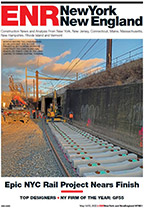In addition to changing how crane safety equipment is used, the aftermath of the 2008 crane accidents are likely to draw attention training and certification procedures for riggers, signalers and operators.
Six years after a set of guidelines were first proposed, OSHA has been expected to unveil its new certification procedures by the end of July, coincidentally falling shortly after the verdict.
Chip Pocock, a safety and risk manager for Buckner Cos., says he hopes the final regulations will look like the consensus document drafted in 2004 by the U.S. Occupational Safety and Health Administration’s Cranes & Derricks Advisory Committee (C-DAC), which was formed to update OSHA’s original safety regulations.
“I was on the seat of that committee along with 21 or 22 other people from the industry, and we finished our work within the time constraints,” Pocock says, adding, “And the government has skidded along. It’s unfortunate.”
OSHA representatives did not return messages seeking comment.
Pocock claims that operator certification has been a “contentious” issue for some time because “some people in the business don’t want to certify crane operators” and would rather operate “by the seat of their pants.”
Art Daniel, president of Daniel Construction Services, Cedar Hill, Tex., and member of OSHA’s Small Busines Advocacy Review Panel, says the emphasis on certification blurs the issue of what it means to be qualified, alleging that “a large majority” of the operators in the high-profile crane accidents of 2008 were certified by an independent accredited program or government entity.
One crane safety operator, who requested anonymity because he was not authorized by his company’s lawyers to talk to the media, claims that C-DAC’s document does not even set up a protocol for certifying riggers, only operators.
He says the document only stipulates that riggers are “qualified” for the job, and fails to define the term.
“If you drop the load, obviously you weren’t qualified,” he says.
He also thinks certification needs to be clarified for specific models of cranes, rather than by a “class” of cranes, as currently proposed. The differences between certain cranes within a particular class can be as wildly divergent as “going from a bicycle to an Indy car,” he claims.
Like licensing drivers, he says, demanding certification for crane operators is “not the end of all the problems,” but it may be “a start to addressing problems.”

